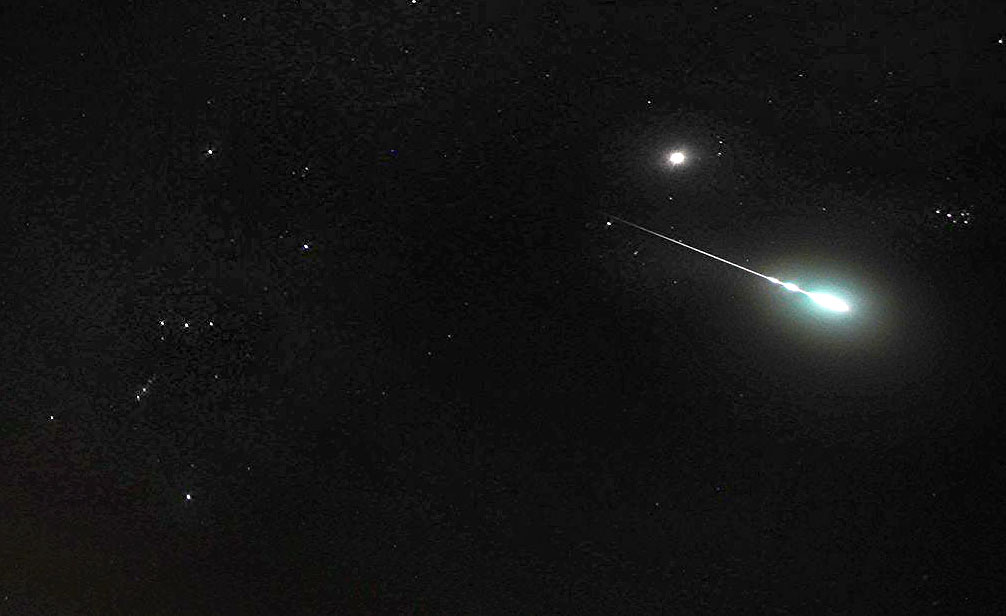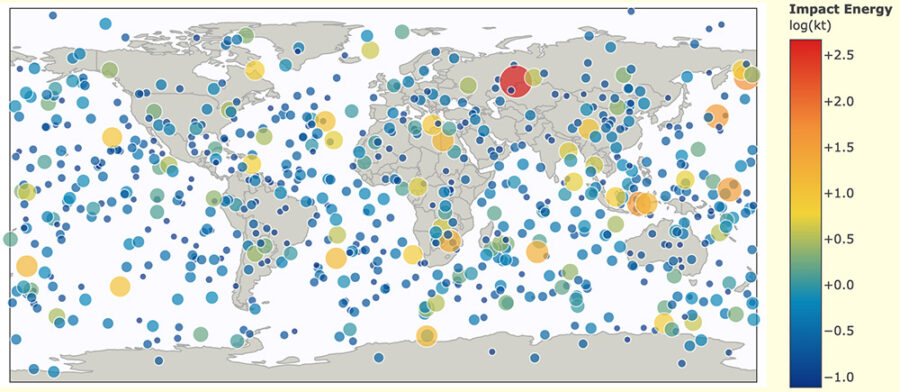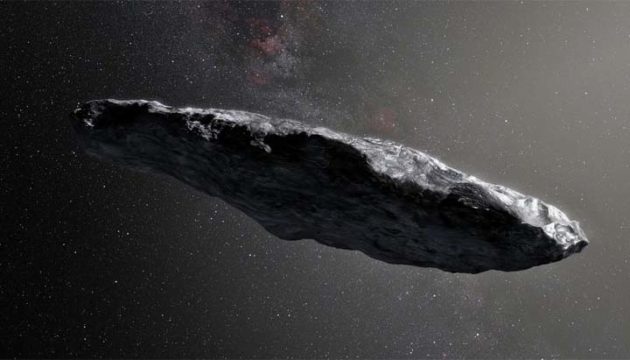The U.S. Department of Defense has released data on some 1,000 bright fireballs. Scientists are still debating if the data confirm an interstellar meteor.

John Flannery
Nearly 1,000 brilliant fireballs — big meteors that (mostly) burn up in Earth’s atmosphere — have hit our planet since 1988. We know this because the U.S. Department of Defense has been tracking them.
For years the Department of Defense (DoD) released only basic information about these events. Now, via a collaboration between NASA and the U.S. Space Force, the DoD is making public additional data on the brightest fireballs to aid basic research and planetary defense.
If you’ve watched meteor showers, you may have seen a fireball. These meteors are the brilliant ones, brighter than Venus, that occur when a bigger-than-usual space rock slams into our upper atmosphere. Bolides represent the brightest fireballs (though in practice, the terms are often used interchangeably).
Here’s what actually happens when you see that brilliant, seconds-long flash: As a meteoroid pushes into the atmosphere, air’s friction sluices away its surface. The extreme pressure on the front end often breaks apart the body, which can exceed a meter in size. Those pieces then make more surface contact with the atmosphere until all of the meteor has vaporized in the upper atmosphere, typically in the mesosphere, some 50 to 85 km (31 to 53 miles) above Earth’s surface. The whole event takes just a few seconds.
Until now, researchers had to rely on the data publicly available: typically, the impact time, location and altitude, and estimated speed as well as occasional estimates of the fireball’s total energy. Now, for the first time, scientists will have access to a crucial piece of information: how these explosions vary in brightness over the few seconds it takes them to break apart.
The energy released by a typical atmospheric impact is on the order of a couple hundred tons of TNT. A few have released a couple thousand tons, though, and the Chelyabinsk meteor that exploded above Russia in 2013 released the energy of 440,000 tons of TNT — only slightly less than the Tunguska explosion of 1908.

NASA / JPL-Caltech and U.S. Space Force
Much of these fireworks happen at infrared wavelengths, but the U.S. government sensors record visible light. As a result, the light curves can only be constructed for the brightest fireballs. Check out the database here: Fireball Light Curve Database
By watching the light emitted as a meteor breaks apart, scientists can learn about the meteors themselves. “[Meteors’] response to increasing pressure from the atmosphere, represented by the light curves, is an indirect probe of their strength and structure,” says Peter Brown (University of Western Ontario, Canada), a planetary scientist who has used publicly available fireball data in his own research. “By studying the light curves, we can indirectly infer the global strength of meter- to decameter-sized near-Earth objects.”
Such data can, for example, shed light on whether an incoming meteor is a fragment from an asteroid or a comet. Understanding meteor structures is essential to defending the planet against future impacts.
An Interstellar Object Before ‘Oumuamua?
One unexpected result to come from analysis of fireball data is the identification of a possible interstellar bolide — that is, an impactor that originated from outside the solar system. It’s worth noting up front, though, that not everyone’s convinced of the claim.
In 2019 Amir Siraj and Abraham Loeb (both at Harvard University) reported that a half-meter meteor detected on January 8, 2014, was hurtling toward Earth on a hyperbolic orbit, one unbound to the Sun. They based the object’s trajectory on the high impact speed recorded in the Center for Near-Earth Object Studies (CNEOS): 44.8 kilometers per second (100,000 mph).

ESO / M. Kornmesser
If this pans out, it would precede the discovery of ‘Oumuamua, thought to be the first interstellar object, by three years. Joel Mozer, the chief scientist of the U.S. Space Operations Command, considers the velocity data sufficiently accurate to indicate the meteor’s origin from outside the solar system. However, others don’t think the evidence merits such an extraordinary claim.
“The data being referred to is just for a very brief period as the bolide is detected passing through Earth’s atmosphere,” explains NASA planetary defense officer Lindley Johnson. “The data span is less than 5 seconds and there is no other known source of independent detection.”
“While further analysis by our US Space Force source does confirm a relatively high velocity for this bolide,” he adds, “it is very hard to be conclusive about the origin of an object based on that sparse and short of data span.”

 1
1









Comments
Martian-Bachelor
May 1, 2022 at 12:08 pm
Any idea why the longitude/latitude data is incomplete, at least for the older detections (like 25 years ago)?
Also, is there anyone who has an estimate on the minimum size or impact energy required to cause a sonic boom?
You must be logged in to post a comment.
You must be logged in to post a comment.